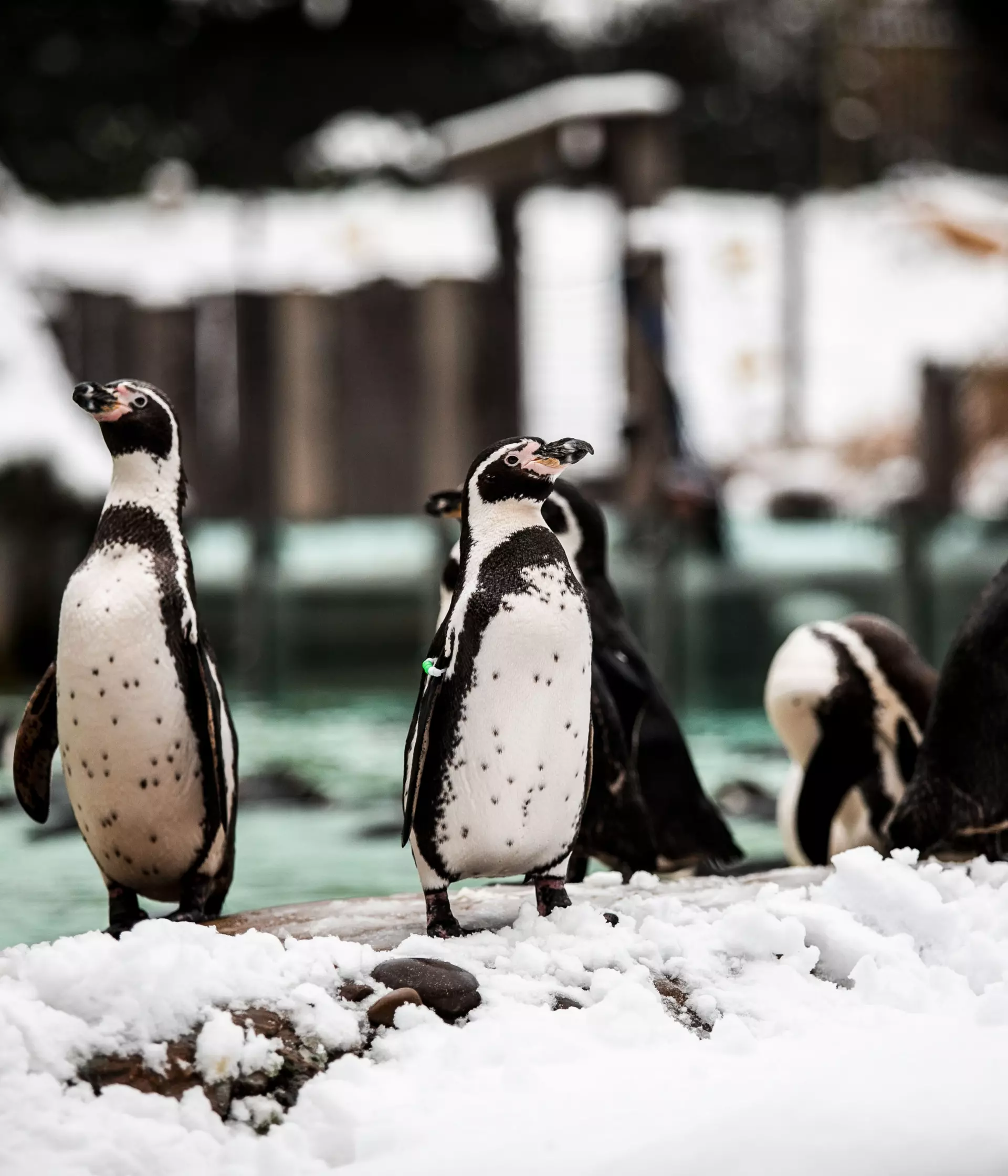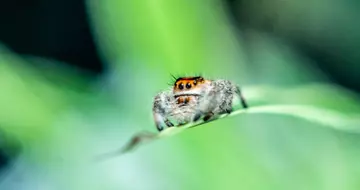
Here are 11 captivatingly bizarre mating habits of some of our wonderful creatures at London Zoo, from shimmying ostriches to golden porcupine showers.
How we humans show love - lovers attempt to impress with romantic gestures. Flowers, love notes, and candle lit dinners spring to mind. Other members of the animal kingdom also show romantic displays of affection, however, not quite the way we may think.
Flirty ostriches
Female ostriches are a picky bunch. To find the ‘best’ mate, the females put the males through a series of tests. One of them being, their dancing ability. The males perform an enchanting, orchestrated dance routine of swaying, strutting and head bobbing in front of the females to showcase their talent. Their routine can be likened to legendary British figure skaters, Torvill and Dean performing the Bolero in front of the judges at the 1984 Olympics.
Spot our ostriches in with the Giraffes.
Watch our flirty ostrich, Rocky, putting on a performance:
The jumping spiders jive
And you think dating is tough? Try being a male jumping spider. To woo a female, he must dance for his life. Literally. Male jumping spiders, dressed with brightly coloured reflective scales, will perform a complex set of dance move alongside a drum routine which sends vibrations through the ground. If the female is impressed by his performance, he can mate with her. If not, he becomes her lunch.
See our jumping spiders in our Tiny Giants area at London Zoo.

The porcupines spray of affection
In our world of love, we might shower our partner with gifts - such as roses or heart-shaped chocolate to show affection. A porcupine, however, showers their lucky lovers with something a little strange. A male porcupine sprays the female he has his eye on with his urine, in the hope of convincing her to mate. But the timing of this display of affection must be right. Female porcupines are only receptive to reproduction 48 hours per year!
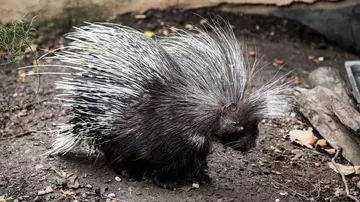
The greater flamingo’s dance off
Do you have moves on the dancefloor? Good dancing is what both male and female flamingos are looking out for when finding the one. Flamingos gather together on the dance floor to perform a specific routine of at least nine moves. The first move is a dance move called ‘head flagging’, where they move their head from side to side in unison. Next up, the tightly packed group begin marching with their heads held high.
From there, they begin saluting their wings by throwing them up in the air to flash their bright pink and black wing feathers. It is thought, they are looking for a mate who’s dancing most closely matches their own moves. In the flamingo’s worlds, it’s not opposites that attract!
Watch two dads raise a flamingo chick over at Whipsnade Zoo:
The northern white-cheeked gibbon's duet
The northern white-cheeked gibbons are graceful small apes, swinging from branches with effortless moves. They have the sweet voice of an angel, if that angel sang loudly with a high-pitched bellow that can reach up to a kilometre away. They romantically perform harmonious duets to cement their bond with their life partner. Gibbons are monogamous, paring up with only each other. This is rare among primates. You will most likely hear their sweet singing in the morning at the Zoo.
They are also brilliant dancers, with moves being likened to a combination of ‘voguing’ and the ‘robot dance’. They bop their hips and swing their arms and legs. However, it is not known exactly the intention of these dance moves and is most likely for a variety of reasons, such as courting, communicating, and attracting attention.
The ring-tailed lemurs perfume
Love is in the air. Male ring-tailed lemurs use their scent to flirt, something known as ‘stink-flirting’. They perform scent-wafting displays, where they rub secretions containing sex pheromones from their wrists onto their tail and wave the scent towards a potential female mate. What’s a better gift for Valentine's Day than some sweet-smelling perfume?
Get up close and personal with London Zoo's walk-through, In with the Lemurs.
A Humboldt penguin’s proposal
Penguins look long and hard for the right gift for their loved ones. This gift being the perfect pebble. Once they find the right one, they hurry back to their chosen penguin and places it in front of them – a romantic proposal of sorts. Humboldt penguins are generally monogamous, with a single couple mating for life.
Here at the Zoo, we have some same sex couples too. Our famous twosome, Ronnie and Reggie got together in 2014 and adopted an abandoned egg a year later.

The great argus show
Our great argus’s, also known as argus pheasants, puts on a charismatic show to woo their partners. First, the males try to charm the females with a spot of tidying. Their stage must be clear of any wood or debris for their closing performance.
This performance involves some stomping before striking an elaborate pose where the male flips up his feathers to create a halo in front of his face. He then turns his head to the side and peaks out a small gap in his wings to see if he has impressed his audience.
Giraffes ur-ine tasting
A male giraffe, also called a bull, has a very strange mating ritual to detect if a female is fertile. A technique that involves having a fine sense of smell. To determine if the female is ovulating, she urinates into the bull's mouth. The bull then curls his lip and inhales deeply with an open mouth. This sends the scent to the back of his mouth where he can get a better smell. He then analyses the scent for certain chemicals that might suggest the female is ready to mate. If they have chemistry, he sticks around, if not, he moves on to the next female that catches his eye.
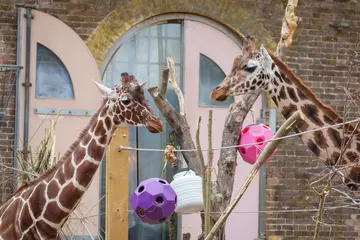
Komodo dragons fight for love
Male Komodo dragons mating habit involves wrestling their competitors in an upright position, using their tale for support. They try to throw their opponent to the ground and during this aggressive fight they often draw blood.
Females give off a strange scent in their poo to show they are ready to mate. The victorious male then uses her poo as a clue to help him find her. Once united, he lovingly gives her head a rub with his chin and a back scratch. If she is interested, they ramp up the affection by licking each others body before mating.
Get closer than ever to our Komodo dragons with our Komodo Dragon Experience.
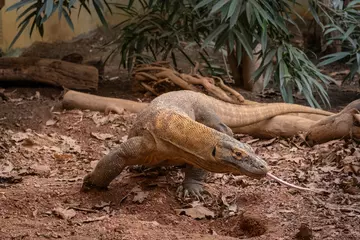
A synchronised clownfish dance
Famous for featuring in “Finding Nemo”, clownfish perform a captivating mating ritual to win over a mate. Males start showing off their fitness by flaring his fins, swimming quickly in circles and quivering his body. He then shows his commitment by clearing a space for a nest near their anemone house. If the female is interested, they then test out their compatibly with a synchronised dance.
Interestingly, all clownfish are born male and can later turn themselves female. This change sometimes happens when mating. Two males may couple up, and the dominant fish will become female. Once this sex change is made, it cannot be reversed.
Go find “Nemo” at our coral reefs in Tiny Giants.
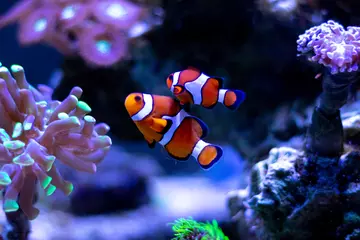
Come for a date at London Zoo this Valentines Day
Make memories that last a lifetime - go wild at our conservation Zoo, just the two of you!
